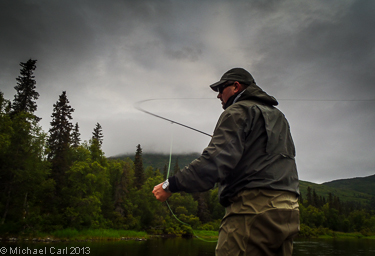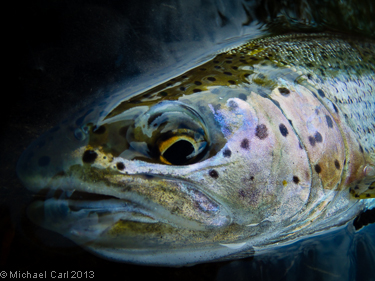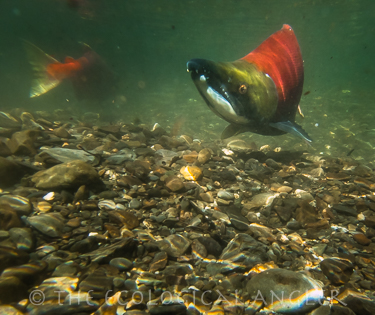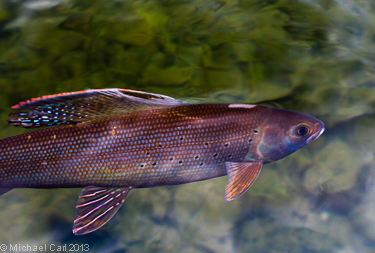Bristol Bay Rivers
The Fishery
Native Trout & Salmon
No Pebble

If developed, the Pebble Mine would be the largest open pit mine in North America. The problem - it's located in the headwaters of the Kvichak and Nushagak Rivers, two of the eight major rivers that feed Bristol Bay. Because of its size, geochemistry and location, Pebble runs a high risk of polluting Bristol Bay, one of the world's great wild salmon strongholds. It's up to our generation to keep this piece of heaven from going to hell.
Fishing the Agulowak River Alaska
The Agulowak River is one of the crown jewels of Southwest Alaska. The river is legendary amongst sport anglers for both numbers and size of the rainbow trout that move into this short stretch of water each summer.

The Agulowak provides spawning habitat for 200,000 sockeye salmon and passes an additional 1.2 million sockeye and other salmon species to spawning grounds higher in the drainage. The Agulowak supports local populations of rainbow trout, Dolly Varden, and Artic Grayling. But when the salmon are spawning in the Wak, the really large rainbows from nearby Lakes Aleknagik and Nerka move in for an easy meal.

The Wak is one of the most heavily used sport fisheries in Southwest Alaska and is an important area for subsistence harvest of fish and wildlife by local residents. The Agulowak is an important feeding area for the brown bears that abound in the region.
Crowds Pak the Wak
By Bristol Bay standards, the Wak draws large crowds of anglers in the summer - most in search of a 24 inch or better rainbow. By some estimates, nearly two-thirds of the guided-angling effort and half of all fishing inside the Wood-Tikchik State Park is concentrated on either the Wak or another short-running river the Agulupak (a.k.a the Pak).

When the huge numbers of sockeye arrive, that draws in the large rainbows which in turn is the siren call for sport anglers from around the world. A crazy food-web / boat-parade plays out on the Wak with guides running their fishing clients up and down the river in a repeating loop throughout the day to drift beads and flies though the best runs.

Although the correctly colored bead can be deadly, the trout on the Wak are no stranger to eating aquatic insects. Drifting a dry fly on the surface can be a fun alternative to indictor fishing. And given the clearity of the water these fish can see it coming from distance.
